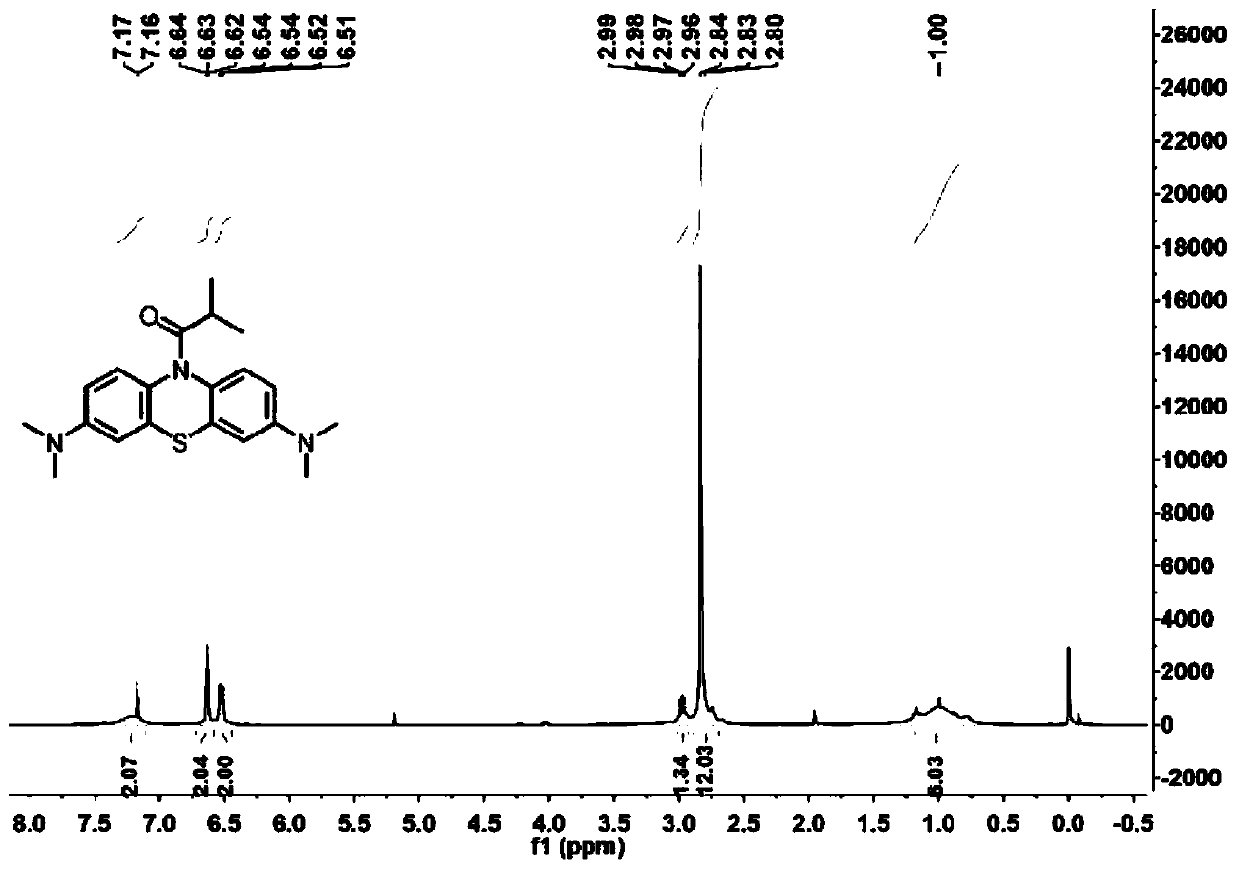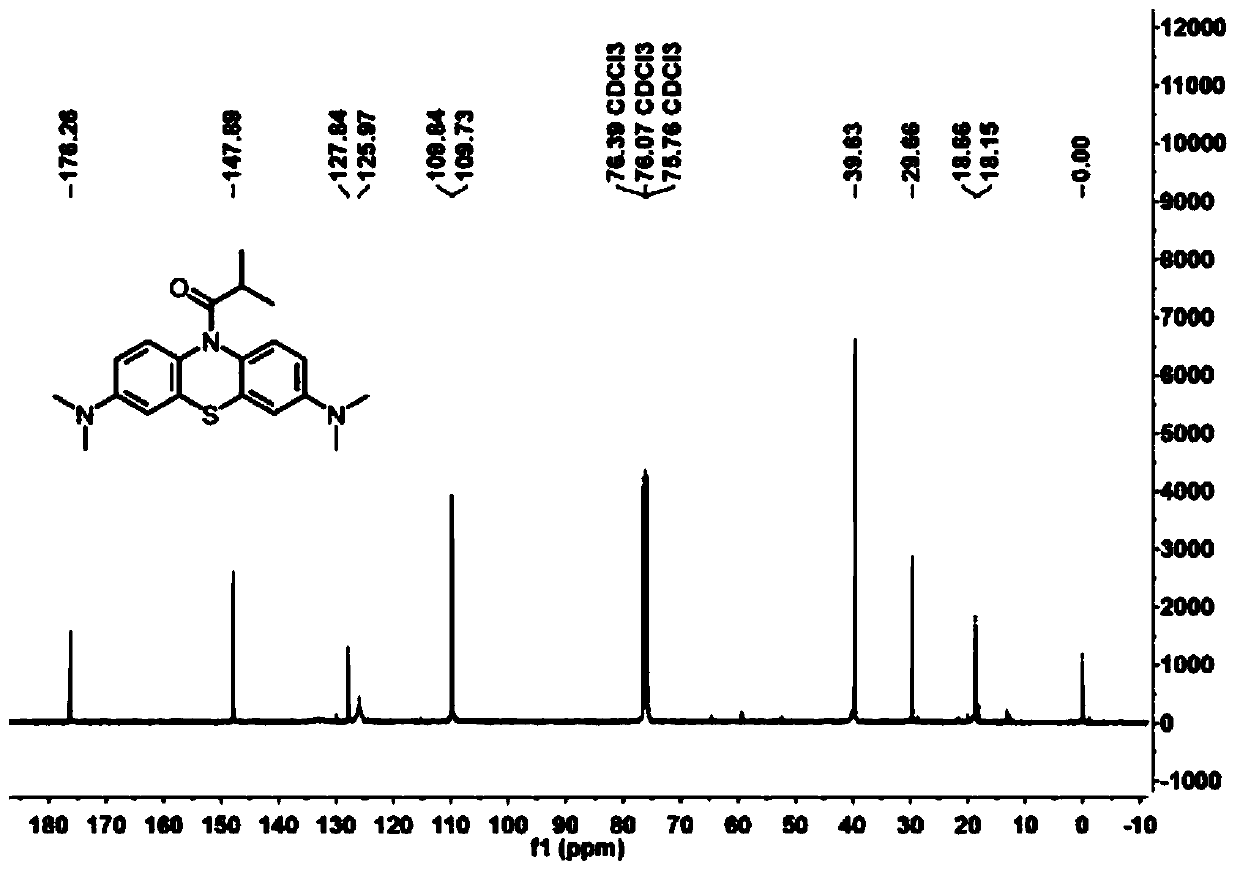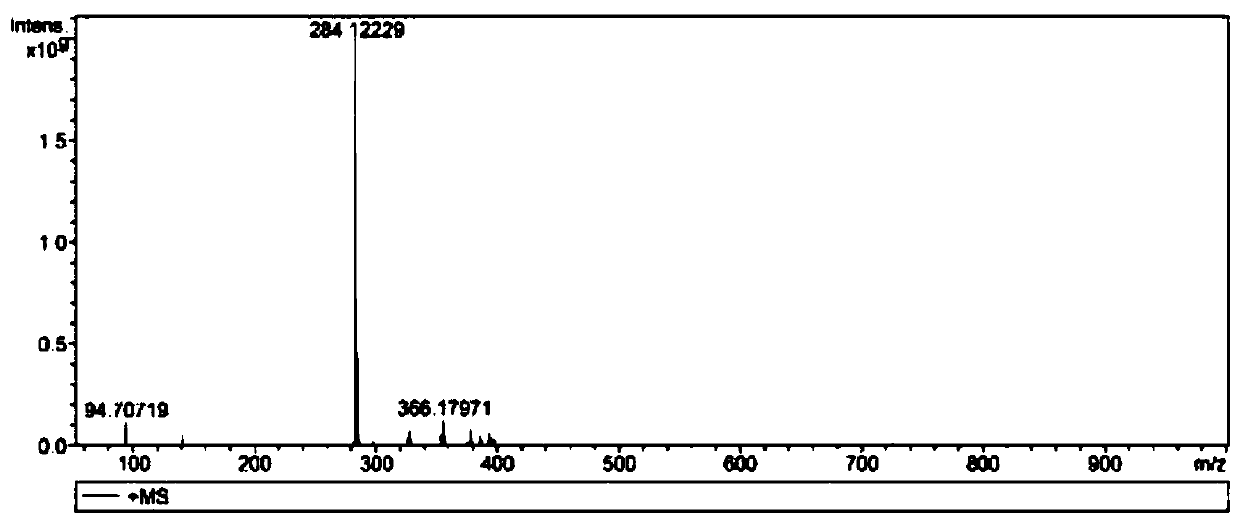HClO detection microelectrode and preparation method and application thereof
A micro-electrode and electrode technology, which is applied in the field of HClO sensor and its preparation, can solve problems such as interference of biologically related substances, achieve fast response time, high selectivity, and improve detection accuracy
- Summary
- Abstract
- Description
- Claims
- Application Information
AI Technical Summary
Problems solved by technology
Method used
Image
Examples
Embodiment 1
[0042] Embodiment 1: The preparation method of HClO detection microelectrode CFME / CNT / ABTS+MBS
[0043] (1) Synthesis of HClO-specific recognition molecular probes
[0044] First, methylene blue (1.12g, 3.75mmol) and Na 2CO 3 (1.59 g, 15.00 mmol) was dissolved in 5 mL of water, followed by the addition of dichloromethane (10 mL), and the mixture was stirred at 40°C under nitrogen. Sodium dithionite (2.61 g, 15.00 mmol) was then dissolved in 5 mL of water and injected directly into the solution using a syringe. After the addition was complete, the mixture was stirred at 40 °C under nitrogen until the solution turned yellow (30 min). The dichloromethane layer was separated from the aqueous layer and dried quickly over anhydrous sodium sulfate. After the sodium sulfate was removed by filtration, the above filtrate was quickly added to triethylamine (0.5mL). In an ice-water bath, under nitrogen, a solution of isobutyryl chloride (3.75mmol) was added dropwise to the mixture and...
Embodiment 2
[0047] Embodiment 2: HClO detection microelectrode CFME / CNT / ABTS+MBS is to the determination of HClO
[0048] The microelectrode CFME / CNT / ABTS+MBS prepared by the present invention is the working electrode, with Ag / AgCl as the reference electrode, and the Pt wire as the counter electrode, and measuring the SWV response before and after adding 50 μM HClO in the 0.1M PBS solution, the potential window: -0.5~0.8V. The result is as Figure 4 , when there is no HClO, there is only one oxidation peak at 0.53V, which is attributed to the electrochemical signal of ABTS. When HClO is added, a new peak appears at around -0.30V, which is mainly due to the reaction between HClO and MBS to form methyl The electrochemical signal generated by the blue structure, in which ABTS is used as an internal reference to improve the accuracy of electrochemical sensing, and MBS is used as a specific recognition molecule of HClO to improve the selectivity of detection. The reaction mechanism is determ...
Embodiment 3
[0049] Embodiment 3: anti-interference experiment
[0050] The CHI660E electrochemical workstation was used to measure the interference of the HClO detection microelectrode CFME / CNT / ABTS+MBS prepared in the present invention. Such as Figure 9 As shown, adding other biologically common active molecules (active oxygen, active sulfur and active nitrogen, etc.) High selectivity.
PUM
 Login to View More
Login to View More Abstract
Description
Claims
Application Information
 Login to View More
Login to View More - R&D
- Intellectual Property
- Life Sciences
- Materials
- Tech Scout
- Unparalleled Data Quality
- Higher Quality Content
- 60% Fewer Hallucinations
Browse by: Latest US Patents, China's latest patents, Technical Efficacy Thesaurus, Application Domain, Technology Topic, Popular Technical Reports.
© 2025 PatSnap. All rights reserved.Legal|Privacy policy|Modern Slavery Act Transparency Statement|Sitemap|About US| Contact US: help@patsnap.com



